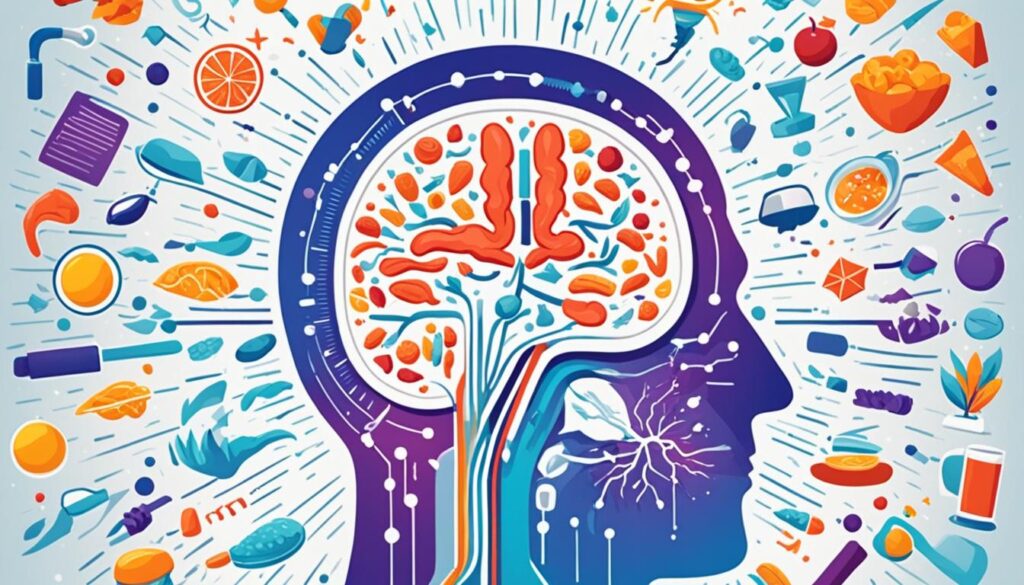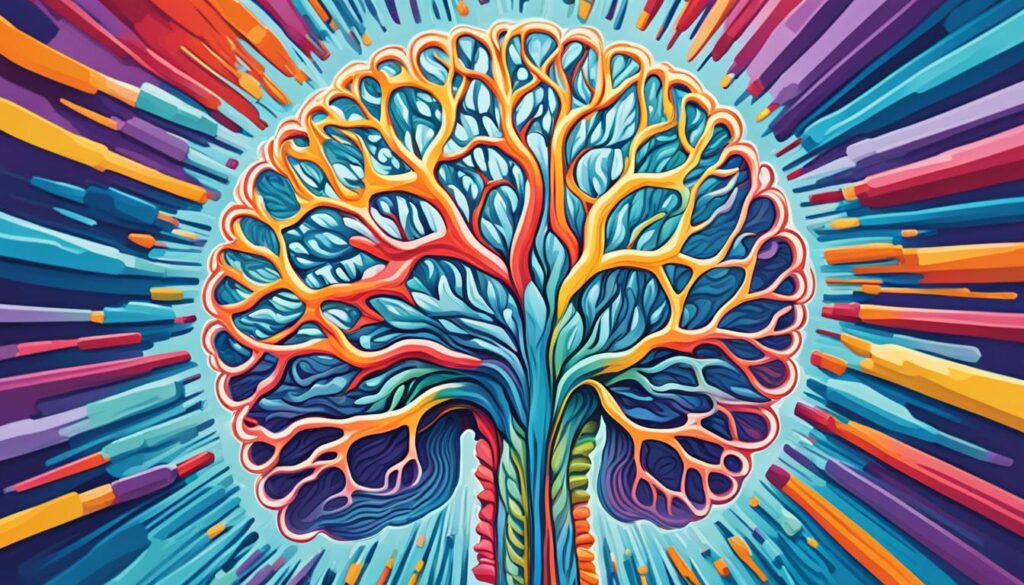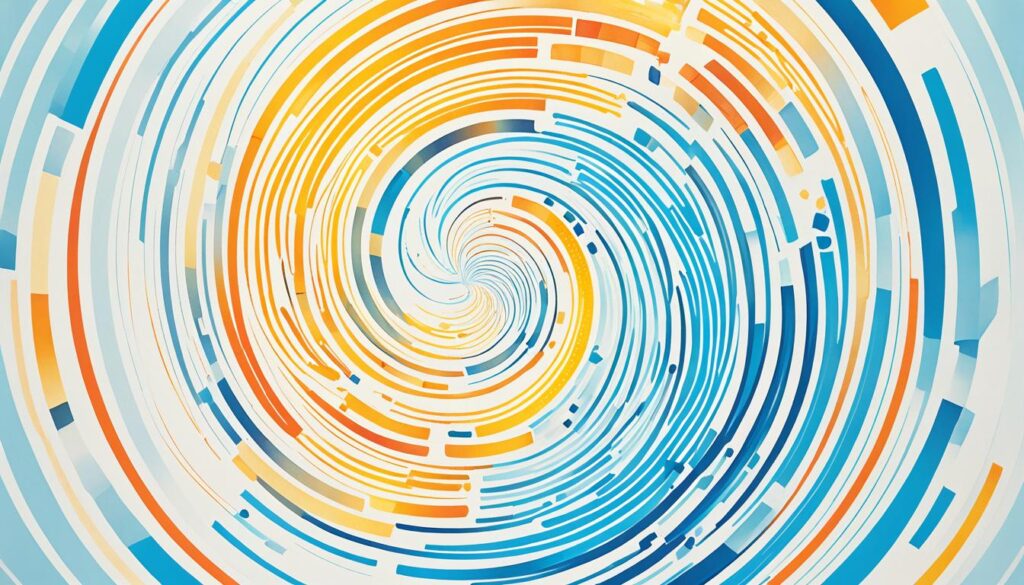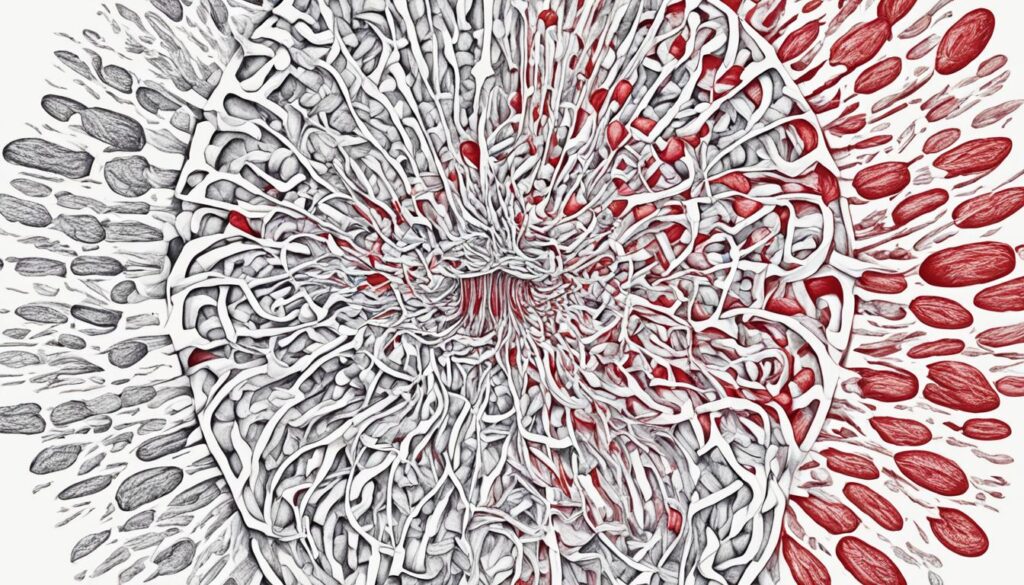Are you experiencing intense headache pain along with other disturbing symptoms? It could be a sign of basilar type migraine, a rare subtype of migraine with aura that originates in the brainstem. This headache condition can cause a range of symptoms, including aura, vertigo, speaking and hearing difficulty, lack of coordination, and intense headache pain.
Basilar type migraine can mimic stroke symptoms and cause a lot of panic. Knowing how it works and how it’s diagnosed can protect you from unnecessary worry or even get you the right help faster.
In this blog, we will explain what a basilar type migraine really is, what causes it, how to recognize the warning signs, what diagnostic criteria doctors follow, and what treatments actually help. Let’s get straight into it.
Key Takeaways:
- Basilar type migraine is a rare subtype of migraine with aura that originates in the brainstem.
- It is characterized by symptoms such as aura, vertigo, speaking and hearing difficulty, lack of coordination, and intense headache pain.
- Basilar type migraine predominantly affects females and can occur at any age, although it is more common in adolescence and young adults.
- Prompt medical attention is important to rule out other serious conditions and to manage symptoms effectively.
- Understanding the symptoms of basilar type migraine is crucial for accurate diagnosis and appropriate treatment.
Table of Contents
ToggleWhat is a Basilar Type Migraine?
Basilar type migraine is a rare but severe form of migraine that affects the brainstem. This part of the brain controls vital functions like balance, vision, hearing, and speech. Unlike typical migraines, this type can cause dramatic symptoms that often confuse people.
It usually comes with aura symptoms that impact both sides of the body and may be followed by a painful headache, often in the back of the head.
Read: Understanding Migraine: Frequently Asked Questions from Migraine Patients in India
Overview of Migraine Subtypes
There are many types of migraines, but not all are equal. Some are chronic, some come with aura, and others target specific brain areas.
- Migraine with aura: Involves visual changes or sensory symptoms before the headache starts.
- Chronic migraines: Happen more than 15 days a month.
- Hemiplegic migraines: Cause weakness on one side of the body.
- Where does basilar type migraine fit? It belongs to a unique group affecting the brainstem and is often confused with serious neurological events.
What Makes It ‘Basilar’?
The term “basilar” refers to the basilar artery, a major blood vessel at the base of the brain. This artery supplies the brainstem, which controls key functions like balance, vision, and coordination.
- Originates in the brainstem or back of the head
- Tied to blood flow through the basilar artery
- Hits visual and balance centers, not just pain areas
These features set basilar type migraine apart from other neurological migraines
Basilar Type Migraine Symptoms and Aura
People often mistake the symptoms of basilar type migraine for something worse, like a stroke. The warning signs are scary, but knowing what to expect can make them easier to understand and manage.
Most Common Symptoms
Most of the time, basilar type migraine strikes with strong, unusual symptoms before the pain begins.
- Double vision
- Vertigo or severe dizziness
- Tinnitus (ringing in the ears)
- Slurred speech or trouble talking
- Loss of balance or difficulty walking
- Visual aura, like flashing lights or tunnel vision
- Throbbing headache at back of head, often affecting both sides
Stat: About 80% of basilar type migraine cases involve vertigo or dizziness (Journal of Headache and Pain, 2021).

Duration and Onset Patterns
Aura and headache don’t always follow a fixed pattern.
- Aura lasts 5 to 60 minutes
- Headache may start after aura or not at all
- Can look like a stroke or TIA (mini-stroke)
Because of these symptoms, migraine misdiagnosis is common.

Placing the image of the brainstem in the center of the text visually enhances the understanding of the brain’s involvement in the pathophysiology of basilar migraine.
Diagnostic Criteria for Basilar Type Migraine (ICHD-3)
There is no blood test or scan that directly confirms basilar type migraine. Doctors follow clinical guidelines to make a diagnosis.
International Classification of Headache Disorders (ICHD-3) Standards
To be diagnosed, the following criteria must be met:
- Two or more aura symptoms like dizziness, slurred speech, or ringing in ears
- Symptoms localized to the brainstem but without motor weakness
- Aura builds up gradually, taking at least 5 minutes
- Headache starts within 60 minutes of aura
“Diagnosis is clinical—there is no blood test or scan to confirm basilar migraines.” – Dr. Anne MacGregor, Migraine Specialist
Differential Diagnosis
Because symptoms are dramatic, doctors must rule out other serious problems first.
- Stroke (CT scan or MRI to check blood flow and damage)
- Epilepsy (EEG may be used)
- Multiple Sclerosis (MRI and spinal tap)
Neurological exams help pinpoint whether the symptoms match migraine diagnostic criteria or point to other disorders.
Causes and Triggers of Basilar Type Migraines
Understanding what causes a basilar type migraine can help you avoid it. While some causes are out of your hands, others can be controlled.
Potential Causes
Some people are more likely to get basilar type migraine type due to inherited or biological factors.
- Family history of neurological migraines
- Hormonal imbalances, especially in women
- Constriction or irritation of the basilar artery
- Overactivity in the brainstem and sensory centers
Common Triggers
Certain activities or conditions can provoke basilar type migraine in those who are susceptible.
- Stress and anxiety
- Lack of sleep or jet lag
- Flashing lights or visual stimuli
- Hormonal shifts (menstrual cycles, menopause)
- Certain foods: chocolate, aged cheese, processed meats
Stat: Women are 3x more likely to have basilar type migraines, especially around menstruation (NIH, 2023).
| Trigger Category | Examples |
|---|---|
| Hormonal | Menstrual cycle, menopause |
| Environmental | Bright lights, loud sounds |
| Lifestyle | Sleep issues, skipping meals |
| Food-related | Caffeine, aged cheese, chocolate |
| Emotional stress | Exams, relationship conflicts, workload |
Treatment and Management of Basilar Migraine
The treatment of basilar migraine focuses on alleviating symptoms and effectively managing acute attacks. It also involves preventive therapy to reduce the frequency and severity of migraine episodes. Here are some key approaches for treating and managing basilar migraine:
Symptomatic Relief for Acute Attacks
During acute attacks, nonsteroidal anti-inflammatory drugs (NSAIDs) and anti-emetics can provide symptomatic relief. NSAIDs, such as ibuprofen, can help to reduce headache pain, while anti-emetics like metoclopramide can alleviate nausea and vomiting commonly associated with migraines.
Recent studies have shown that triptans and ergotamines, which were previously avoided due to concerns about cerebral ischemia, can be beneficial in managing the headache phase of basilar type migraine. These medications work by constricting blood vessels in the brain and reducing inflammation.
Preventive Therapy
To prevent future basilar type migraine episodes, it is important to identify and modify triggers. Keeping a headache diary can help identify patterns and potential triggers such as stress, certain foods, hormonal changes, and environmental factors. Avoiding these triggers can significantly reduce the frequency of migraines.
For individuals with frequent or severe basilar migraines, preventive medications may be recommended. Verapamil, a calcium channel blocker, and topiramate, an antiepileptic drug, are commonly prescribed options. These medications help stabilize blood vessels and reduce the likelihood of migraine attacks.
Non-Pharmacological Therapies
In addition to medication, non-pharmacological therapies can also be helpful in preventing migraines. These include relaxation techniques, acupuncture, massage, cognitive behavior therapy (CBT), and biofeedback techniques.
Relaxation techniques, such as deep breathing exercises and progressive muscle relaxation, can help manage stress and reduce the frequency of migraines. Acupuncture and massage have been shown to provide relief by promoting muscle relaxation and improving blood flow.
Cognitive behavior therapy (CBT) can assist individuals in identifying and managing stress, modifying thoughts and behaviors, and coping with migraines more effectively. Biofeedback techniques, which involve learning how to control bodily responses, have shown promising results in reducing the frequency and intensity of migraines.
Overall, a combination of pharmacological and non-pharmacological approaches tailored to the individual’s specific needs and triggers is essential for effective treatment and management of basilar migraine. Consult with a healthcare professional to develop a personalized treatment plan that addresses your symptoms and improves your quality of life.
Differential Diagnosis of Basilar Migraine
Basilar migraine, with its unique set of symptoms, can sometimes be mistaken for other types of migraines. It is crucial to conduct a thorough differential diagnosis to rule out similar conditions and confirm the diagnosis of basilar migraine. Some of the conditions that should be considered during the diagnostic process include:
- Hemiplegic migraine: This type of migraine is characterized by temporary paralysis or weakness on one side of the body, which can be mistaken for the lack of coordination seen in basilar migraine.
- Migraine with typical aura: This type of migraine includes various visual disturbances, such as flashing lights or blind spots, that may resemble the aura symptoms experienced in basilar migraine.
- Meniere’s disease: Meniere’s disease involves recurring episodes of vertigo, hearing loss, tinnitus, and a feeling of ear fullness. These symptoms can overlap with those of basilar migraine.
- Vestibular disease: Disorders affecting the vestibular system, such as vestibular neuritis or labyrinthitis, can cause symptoms like vertigo and impaired coordination, which may mimic the presentation of basilar migraine.
- Transient ischemic attack (TIA): TIAs are brief episodes of reduced blood flow to the brain, resulting in temporary neurological symptoms similar to those of basilar migraine. It is crucial to distinguish between TIAs and basilar migraine to ensure appropriate management.
- Stroke: Stroke can cause symptoms such as sudden and severe headache, dizziness, slurred speech, and difficulty walking, which can overlap with basilar migraine. Prompt differentiation is essential to provide timely intervention.
- Brainstem arteriovenous malformation: Arteriovenous malformation (AVM) in the brainstem can lead to neurological symptoms like vertigo, difficulty speaking, and impaired coordination, mimicking basilar migraine. Imaging studies are necessary to exclude AVM.
- Tumors: Certain brain tumors, especially those located in the brainstem or affecting blood vessels, can manifest as symptoms similar to basilar migraine. Diagnostic imaging is crucial to identify the presence of tumors.
- Meningitis: Inflammation of the meninges can cause severe headaches, neck stiffness, fever, and neurological symptoms similar to those of basilar migraine. Prompt evaluation is necessary to rule out meningitis.
To confirm the diagnosis of basilar migraine, a comprehensive evaluation, including a detailed history, physical examination, and appropriate diagnostic imaging, should be conducted. These diagnostic measures help eliminate other potential conditions and establish basilar migraine as the definitive diagnosis.
| Condition | Key Features |
|---|---|
| Hemiplegic Migraine | Temporary paralysis or weakness on one side of the body |
| Migraine with Typical Aura | Visual disturbances like flashing lights or blind spots |
| Meniere’s Disease | Recurring episodes of vertigo, hearing loss, tinnitus, and ear fullness |
| Vestibular Disease | Vertigo and impaired coordination |
| Transient Ischemic Attack (TIA) | Brief episodes of reduced blood flow leading to temporary neurological symptoms |
| Stroke | Sudden and severe headache, dizziness, slurred speech, and difficulty walking |
| Brainstem Arteriovenous Malformation | Neurological symptoms due to abnormal blood vessel formation in the brainstem |
| Tumors | Brain tumors affecting the brainstem or blood vessels |
| Meningitis | Inflammation of the meninges causing severe headaches, neck stiffness, and fever |
Prognosis and Complications of Basilar Migraine
Basilar migraine can have a more severe and disabling impact compared to other types of migraines. This is due to the increased severity of symptoms and longer duration of episodes. However, there is some good news. With age, the frequency of basilar migraine episodes tends to decrease, and they often evolve into more typical patterns.
While migraines with aura in general have a slightly higher risk of stroke compared to migraines without aura, the risk of stroke in basilar migraine is not known to be higher than that in other types of migraines with aura. However, it’s important to note that certain factors can further increase the risk of stroke in individuals with basilar migraine. Smoking and the use of estrogen contraceptives can contribute to this increased risk.
To minimize the chances of experiencing complications, it’s essential for individuals with basilar migraine to modify risk factors. Quitting smoking is highly recommended as it not only reduces the risk of stroke but also has numerous other health benefits. Additionally, discussing contraceptive options with healthcare professionals and considering alternative methods that may not increase the risk of stroke is advisable.
By proactively managing risk factors and seeking appropriate medical guidance, individuals with basilar migraine can improve their prognosis and reduce the likelihood of complications.

| Basilar Migraine | Other Types of Migraine with Aura |
|---|---|
| Increased symptom severity | Less severe symptoms compared to basilar migraine |
| Longer duration of episodes | Shorter duration of episodes |
| Risk of stroke not higher than other migraines with aura | Slightly higher risk of stroke than migraines without aura |
Triggers and Lifestyle Modifications for Basilar Migraine
Basilar migraine episodes can be triggered by various factors, and identifying these triggers is crucial in preventing and managing migraine attacks. While triggers can vary among individuals, there are common triggers to be aware of:
- Stress: Emotional or physical stress can often provoke basilar migraine episodes. Implementing stress management techniques such as meditation, deep breathing exercises, and yoga can help reduce stress levels and minimize the frequency of attacks.
- Alcohol: Consumption of alcohol, especially certain types like red wine and beer, can act as a trigger for basilar migraine. It is advisable to limit or avoid alcohol intake to prevent attacks.
- Caffeine: Excessive consumption of caffeinated beverages, such as coffee, tea, and energy drinks, can trigger migraines. It is recommended to moderate caffeine intake and monitor its effect on migraine frequency.
- Hormonal changes: Fluctuations in estrogen levels, such as those experienced during menstruation or pregnancy, can trigger migraines in some individuals. Maintaining hormonal balance through hormonal therapy or contraceptive methods may help manage the condition.
- Certain foods: Certain foods have been identified as common triggers for migraines, including aged cheese, chocolate, processed meats, citrus fruits, and foods containing monosodium glutamate (MSG). Keeping a food diary can help identify individual triggers and avoid them.
- Environmental factors: Environmental changes such as strong odors, bright lights, loud noises, and weather changes can trigger migraines. Taking steps to minimize exposure to these triggers, such as wearing sunglasses, using earplugs, and avoiding strong smells, may help prevent attacks.
Lifestyle modifications play a significant role in managing basilar migraine and reducing the frequency of attacks. Some lifestyle modifications to consider include:
- Maintaining a balanced diet: Eating regular, nutritious meals can help stabilize blood sugar levels and minimize migraine triggers. Avoiding excessive amounts of processed foods, artificial sweeteners, and additives is also recommended.
- Regular exercise: Engaging in regular physical activity, such as walking, swimming, or yoga, can help reduce stress levels and improve overall well-being. However, it is important to avoid excessive exertion, as intense physical activity may act as a trigger.
- Stress management techniques: Finding effective stress management techniques, such as practicing mindfulness, participating in relaxation exercises, or seeking professional counseling, can help reduce the frequency and intensity of basilar migraines.
- Getting enough sleep: Adequate sleep is crucial for maintaining overall health and reducing the likelihood of migraine attacks. Establishing a regular sleep schedule and creating a conducive sleep environment can promote better sleep quality.
Common Triggers for Basilar Migraine
| Trigger | Description |
|---|---|
| Stress | Emotional or physical stress |
| Alcohol | Excessive consumption of alcoholic beverages |
| Caffeine | Excessive consumption of caffeinated drinks |
| Hormonal changes | Fluctuations in estrogen levels |
| Certain foods | Foods like aged cheese, chocolate, and processed meats |
| Environmental factors | Strong odors, bright lights, loud noises, and weather changes |

Keeping a headache diary can help track triggers and symptoms, enabling better understanding of individual patterns and making the necessary lifestyle modifications. With proactive management and a focus on incorporating healthy habits, individuals with basilar migraine can effectively reduce the frequency and severity of their migraine attacks.
Treatment Options for Basilar Migraine
When it comes to managing basilar migraine, there are several treatment options available to provide pain relief during acute attacks and prevent future episodes. The choice of treatment depends on the severity and frequency of migraines and individual response to medications. Here are some commonly used treatment options:
1. Over-the-Counter Pain Relievers
Nonsteroidal anti-inflammatory drugs (NSAIDs) are often the first line of defense for alleviating the pain associated with basilar migraine. Medications such as ibuprofen and aspirin can provide symptomatic relief and are readily available over-the-counter.
2. Antiemetic Medications
Since nausea is a common symptom of migraines, antiemetic medications may be prescribed to manage this symptom. These medications help to reduce nausea and vomiting, providing relief during migraine attacks.
3. Prescription Medications
In cases where over-the-counter pain relievers are not effective, stronger prescription medications may be necessary. Your healthcare provider may prescribe specific medications to target the symptoms of basilar migraine and provide more significant pain relief.
4. Preventive Medications
For individuals who experience frequent and severe basilar migraine episodes, preventive medications may be recommended. These medications are taken daily to reduce the frequency and severity of migraines. Common preventive medications include:
| Medication | Usage |
|---|---|
| Botox injections | Used to prevent migraines by blocking the release of chemicals that contribute to pain transmission. |
| Seizure-reducing medications (e.g., topiramate) | Can help stabilize brain activity and reduce the occurrence of migraines. |
| Calcium channel blockers (e.g., verapamil) | Used to relax blood vessels, improve blood flow, and reduce migraines. |
| CGRP inhibitors | Newer medications that specifically target calcitonin gene-related peptide (CGRP), a protein involved in migraine attacks. |
It’s important to remember that the effectiveness of preventive medications varies from person to person. Your healthcare provider will work with you to find the most suitable medication and dosage based on your individual needs.
In addition to medications, lifestyle modifications and self-care practices can also play a crucial role in managing basilar migraine. It’s recommended to maintain a healthy lifestyle, including regular exercise, adequate sleep, stress management techniques, and a well-balanced diet. Tracking your migraines in a headache diary can help identify triggers and patterns, enabling you to make informed decisions and adapt your lifestyle accordingly.
Read: Preventive Measures for Headaches in Summers
Conclusion
In conclusion, basilar migraine is a distinctive subtype of migraine with aura that originates in the brainstem. Although it is a rare condition, understanding the symptoms, triggers, and treatment options is crucial for effective management. Lifestyle modifications, including avoiding known triggers and adopting stress management techniques, play a vital role in preventing and managing basilar migraine episodes. By working closely with healthcare professionals to develop an individualized treatment plan, you can address your symptoms and improve your overall quality of life. Implementing appropriate strategies, such as avoiding triggers and adopting stress management techniques, allows individuals with basilar migraine to better navigate their condition and minimize its impact.
It is important to note that basilar migraine management requires a holistic approach. This includes lifestyle modifications, such as following a balanced diet, engaging in regular exercise, practicing good sleep hygiene, and managing stress levels. By making these lifestyle adjustments and implementing the recommended treatment options, you can reduce the frequency and severity of basilar migraine attacks.
Remember, the effectiveness of basilar migraine management may vary from person to person. It is crucial to work closely with your healthcare provider to find the most suitable treatment plan for your specific needs. Regular follow-ups and open communication can help monitor your progress and make any necessary adjustments. By taking an active role in your basilar migraine management and making positive lifestyle modifications, you can regain control over your life and minimize the impact of this condition on your daily activities.
FAQ
What is basilar type migraine?
Basilar type migraine, also known as basilar artery migraine, is a rare subtype of migraine with aura that originates in the brainstem. It is characterized by symptoms such as aura, vertigo, speaking and hearing difficulty, lack of coordination, and intense headache pain.
What causes basilar type migraine?
The exact cause of basilar type migraine is unknown, but it is believed to be triggered by environmental factors and may have a genetic component. Triggers such as strong smells, loud noises, weather changes, excessive sleep, lack of sleep, increased stress, intense physical exertion, oral contraceptives, certain foods, and food preservatives may play a role.
How does basilar migraine differ from other types of migraines?
Basilar migraine was initially believed to be caused by spasms of the basilar artery, but current evidence suggests it is a type of migraine with aura originating from firing of nerves in the brainstem. Symptoms such as vertigo, dysarthria, diplopia, impaired hearing, lack of coordination, confusion, and even loss of consciousness can occur.
How is basilar migraine diagnosed?
To diagnose basilar migraine, certain criteria must be met, including the presence of aura symptoms originating from the brainstem or both occipital hemispheres, lasting at least 5 minutes but not longer than 60 minutes. These symptoms should be followed by a migraine without aura. Imaging tests like MRI or CT scans may be used to rule out other pathologies.
How is basilar migraine treated?
The treatment of basilar migraine aims to alleviate symptoms and manage attacks effectively. For acute attacks, nonsteroidal anti-inflammatory drugs (NSAIDs) and anti-emetics can provide relief. Triptans and ergotamines may also be used. Preventive therapy includes identifying triggers, maintaining a headache diary, and considering medications such as verapamil and topiramate. Non-pharmacological therapies like relaxation techniques, acupuncture, massage, cognitive behavior therapy, and biofeedback techniques can also be helpful.
What conditions can mimic basilar migraine?
Basilar migraine can mimic other conditions such as Meniere’s disease, vestibular disease, transient ischemic attack (TIA), stroke, brainstem arteriovenous malformation, tumors, and meningitis. Thorough examination and diagnostic tests may be necessary to exclude these conditions and confirm the diagnosis.
What are the prognosis and complications of basilar migraine?
Basilar migraine can be more severe and disabling compared to other types of migraines due to increased symptom severity and longer duration. While migraines with aura have a slightly higher risk of stroke, the risk of stroke in basilar migraine is not known to be higher than in other types of migraines with aura. However, smoking and the use of estrogen contraceptives can increase the risk of stroke.
What are the common triggers for basilar migraine?
Triggers for basilar migraine episodes can vary but common triggers include stress, alcohol, caffeine, hormonal changes, certain foods, and environmental factors. It is important to identify and avoid these triggers and make lifestyle modifications such as maintaining a balanced diet, regular exercise, stress management techniques, and getting enough sleep.
What are the treatment options for basilar migraine?
The treatment options for basilar migraine focus on relieving pain during acute attacks and preventing future episodes. Over-the-counter pain relievers like NSAIDs can provide symptomatic relief. Antiemetic medications may be prescribed for nausea. Stronger prescription medications may be necessary for more severe cases. Preventive medications such as Botox injections, seizure-reducing medications, calcium channel blockers, and CGRP inhibitors may be recommended for frequent and severe episodes.
How can basilar migraine be managed?
Effective management of basilar migraine involves implementing lifestyle modifications, such as avoiding triggers and adopting stress management techniques. Working closely with healthcare professionals to develop an individualized treatment plan is important for improving symptoms and overall quality of life.
Source Links
About The Author

This article is medically reviewed by Dr. Chandril Chugh, Board-Certified Neurologist, providing expert insights and reliable health information.
Dr. Chandril Chugh is a U.S.-trained neurologist with over a decade of experience. Known for his compassionate care, he specializes in treating neurological conditions such as migraines, epilepsy, and Parkinson’s disease. Dr. Chugh is highly regarded for his patient-centered approach and dedication to providing personalized care.
→ Book a consultation to discover which remedies suit your needs best.





